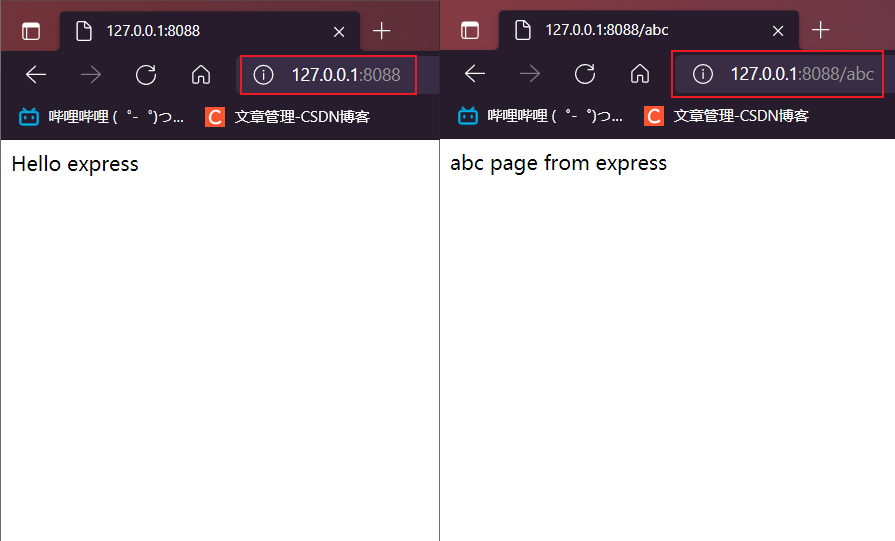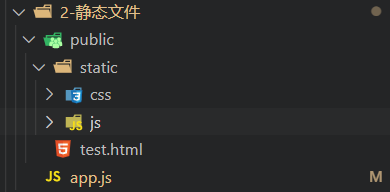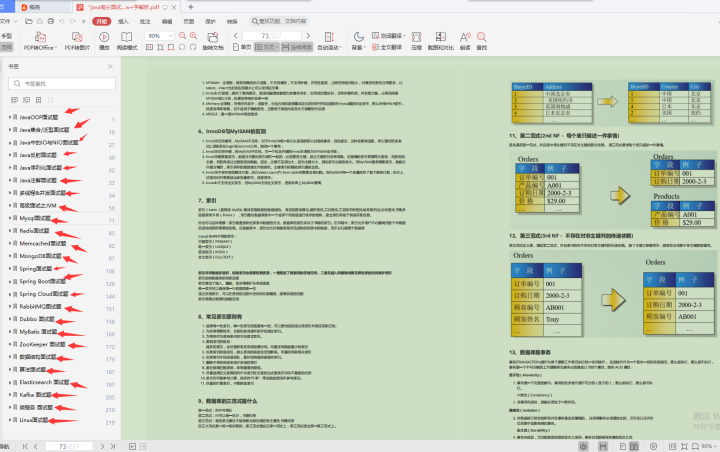var http = require("http");
var url = require("url");
// handle is an array that maps the one-to-one correspondence between different access paths and the corresponding function of the business processing module
function start(route, handle) {
function onRequest(request, response) {
var pathname = url.parse(request.url).pathname;
var html = route(handle, pathname);
response.writeHead(200, { "Content-Type": "text/plain" });
response.write(html);
response.end();
}
http.createServer(onRequest).listen(8088);
}
exports.start = start;
Entrance main module index js:
Start using server JS is different. It has routing function. Generally, it will pass index.js JS startup
var server = require("./server");
var router = require("./router");
var requestHandlers = require("./requestHandlers");
var handle = {}
handle["/listCategory"] = requestHandlers.listCategory;
handle["/listProduct"] = requestHandlers.listProduct;
server.start(router.route, handle);
Train of thought:
-
Start the server as follows```
node index.js
-
index.js called server Start function and passed router JS, the route function and handle array are used as parameters
-
serverl.js starts the service through port 8088, and then processes the business with onRequest function
3.1 in onRequest, first obtain the access path pathname
3.2 then call route r.. JS and pass in the pathname and handle arrays
-
In router JS, call the real business function with pathname as the subscript, and return the return value of the business function
If it cannot be found, for example, if the path to access / listUser is not found in the handle array, listUser is not defined will be returned
-
When the access address is / listCategory, the real business function requesthandlers listCategory() in JS will be called and return the business Html code: "a lots of categories"
This example is derived from the previous route. See code: File operation
Core of file operation:
var fs = require('fs');
function readFile() {
var html = fs.readFileSync('how2j.html');
return html;
}
function writeFile() {
// The callback function must be, or an error will be reported
fs.writeFile('how2java.html', 'hello from how2java', (err) => {
if (err) throw err;
});
return "write successful";
}
npm is a tool for downloading other people's modules and publishing their own modules.
With the installation of node, npm is installed automatically.
You can view the current npm version through the following command:
npm -v
If the following operations are not added with - g, they do not represent global operations, but only the current project.
For details on modifying the npm global installation path, see: https://www.cnblogs.com/zwjphp/p/14123746.html
To install the express module globally using npm:
npm install express -g
To uninstall the express module globally using npm:
npm uninstall express -g
To view globally installed modules:
npm list -g
In addition to installing modules published by others, we can also publish modules ourselves. All NPMS are published in https://www.npmjs.com/ , the specific release method can be Baidu.
Install mysql related modules:
npm install mysql -g
Database operation:
create database nodejs use nodejs; CREATE TABLE category_ ( id int(11) NOT NULL AUTO_INCREMENT, # Primary key auto increment name varchar(30) , PRIMARY KEY (id) ) DEFAULT CHARSET=UTF8; insert into category_ values(null,"category1"); insert into category_ values(null,"category2"); insert into category_ values(null,"category3"); insert into category_ values(null,"category4"); insert into category_ values(null,"category5");
db.js
-
Write the function openConnection, which fills in the address, account, password and database name of the database link
-
Write the function closeConnection to close the link
-
Write database related operation functions
var mysql = require("mysql"); // Introducing mysql module
var connection;
function openConnection() {
connection = mysql.createConnection({
host: "127.0.0.1",
user: "root",
password: "1234",
database: "nodejs"
});
connection.connect();
}
function closeConnection() {
connection.end();
}
function showAll() {
openConnection(); // Open connection
var sql = "SELECT * FROM category_ order by id asc";
connection.query(sql, (err, results) => {
if (err) {
console.log("[SELECT ERROR] - ", err.message);
return;
}
if (results) {
console.log(results);
for (var i = 0; i < results.length; i++) {
console.log("%d\t%s", results[i].id, results[i].name);
}
}
});
closeConnection(); // Close connection
}
function add(name) {
openConnection();
var params = [null, name];
var sql = "insert into category_ values (?,?)";
connection.query(sql, params, (err, result) => {
if (err) {
console.log("[INSERT ERROR] - ", err.message);
return;
}
console.log("insert success, the generated id is:", result.insertId);
});
closeConnection();
}
function remove(id) {
openConnection();
var params = [id];
var sql = "delete from category_ where id = ?";
connection.query(sql, params, (err, result) => {
if (err) {
console.log("[REMOVE ERROR] - ", err.message);
return;
}
console.log("remove id=%d success ", id);
});
closeConnection();
}
function get(id) {
openConnection();
var params = [id];
var sql = "select * from category_ where id = ?";
connection.query(sql, params, (err, result) => {
if (err) {
console.log("[GET ERROR] - ", err.message);
return;
}
if (result.length != 0) {
var category = { id: result[0].id, name: result[0].name };
console.log("get category:" + JSON.stringify(result))
} else {
console.log("not found with id :" + id)
}
});
closeConnection();
}
function update(id, name) {
openConnection();
var params = [name, id];
var sql = "update category_ set name = ? where id = ?";
connection.query(sql, params, (err, result) => {
if (err) {
console.log("[UPDATE ERROR] - ", err.message);
return;
}
console.log("update success" + result.affectedRows);
});
closeConnection();
}
exports.showAll = showAll
exports.add = add
exports.remove = remove
exports.get = get
exports.update = update
On app Calling db. in JS Database related operations written in JS:
var db = require("./db");
// db.add("category test");
// db.update(6, "category 666");
// db.remove(1);
db.get(2);
db.showAll();
=====================================================================================
Express is a convenient web framework for developers, which allows developers to easily handle common operations such as routing, cookies, static files, uploading files, restful style and so on.
All codes: https://gitee.com/szluyu99/how2j_front_note/tree/master/nodejs/7-express
To install the express frame:
npm install express -g
Use the following command to create a package JSON file:
npm init
Enter all but package name.
On app JS uses the express framework to implement simple routing functions:
var express = require('express')
var app = express()
// http://localhost:8088
app.get('/', (req, res) => {
res.send('Hello express')
});
// http://localhost:8088/abc
app.get('/abc', (req, res) => {
res.send('abc page from express')
});
var server = app.listen(8088);
Run project:
node app.js
Visit separately: http://127.0.0.1:8088 And http://127.0.0.1:8088/abc

By default, nodejs does not provide static file access, that is, there is a test. Net in the working directory HTML, which can not be accessed directly through the following address: http://127.0.0.1:8088/test.html .
The access of static files, such as HTML, CSS and JS, is a common requirement of web server. This problem can be solved by express.
code: express access static files
Core code:
var express = require('express')
var path = require('path')
var app = express()
// Set static access directory
// express.static specifies the location of the static directory
// __ dirname is the working directory
app.use(express.static(path.join(__dirname, 'public')))
app.listen(8088);
The directory structure of the project is as follows. After the above settings, public is set as a static directory and can be accessed.

Complete project: Upload file
Install the module:
npm install express -g npm install multer -g
Core code:
upload.html:
<!DOCTYPE html>
<meta http-equiv="Content-Type" content="text/html; charset=UTF-8">
<form action="uploadPhoto" method="post" enctype="multipart/form-data">
Upload pictures : <input type="file" name="image" accept="image/*" /> <br>
<input type="submit" value="upload">
</form>
app.js:
var express = require('express');
var path = require('path')
var fs = require("fs");
var multer = require('multer');
var app = express();
//Specify static file location
app.use(express.static(path.join(__dirname, 'public')))
//After uploading, put it in the tmp directory under the working directory. When uploading, the name of the upload control must be image
app.use(multer({ dest: path.join(__dirname, 'tmp') }).array('image'));
//Get suffix
function getExtName(fileName) {
var index1 = fileName.lastIndexOf(".");
var index2 = fileName.length;
var extName = fileName.substring(index1 + 1, index2);
return extName;
}
app.post('/uploadPhoto', function (req, res) {
//Get the suffix of the uploaded picture
var extName = getExtName(req.files[0].originalname);
//random number
var rundomNumber = Math.ceil(Math.random() * 10000000);
//Take random number as file name
var randomFileName = rundomNumber + "." + extName;
//Create a picture directory
var imgFolder = __dirname + "/public/img/";
fs.exists(imgFolder, (exists) => {
if (!exists)
fs.mkdir(imgFolder, (err) => {
console.log(err);
});
});
//Picture path
var imgFile = __dirname + "/public/img/" + randomFileName;
//Path to upload temporary files
var uploadedTempFilePath = req.files[0].path;
//Read temporary files
fs.readFile(uploadedTempFilePath, function (err, data) {
//After reading successfully, copy to the picture path
fs.writeFile(imgFile, data, function (err) {
//After successful writing, the img element is returned to display the uploaded image
res.writeHead(200, { 'Content-Type': 'text/html' });
res.end("<img src='img/" + randomFileName + "'/>");
});
});
})
### last
By chance, I got a job from my friend“ java "High score interview guide", which covers 25 classified interview questions and detailed analysis: JavaOOP,Java aggregate/Generic Java Medium IO And NIO,Java Reflection Java Serialization Java Annotation, multithreading&Concurrency JVM,Mysql,Redis,Memcached,MongoDB,Spring,Spring Boot,Spring Cloud,RabbitMQ,Dubbo ,MyBatis ,ZooKeeper ,Data structure, algorithm Elasticsearch ,Kafka ,Microservices Linux.
No, it's going to be the recruitment season soon. Many friends are preparing the spring move of "gold, three silver and four". I think this one“ java "High score interview guide" should play a big role, so I want to share it with you today.

> Please note: about this“ java "High score interview guide", almost all the topics (25) in each direction will be listed here. Without looking at the answers, you can test your level by yourself. Due to space reasons, you can't show all the complete answers here
req.files[0].path;
//Read temporary files
fs.readFile(uploadedTempFilePath, function (err, data) {
//After reading successfully, copy to the picture path
fs.writeFile(imgFile, data, function (err) {
//After successful writing, the img element is returned to display the uploaded image
res.writeHead(200, { 'Content-Type': 'text/html' });
res.end("<img src='img/" + randomFileName + "'/>");
});
});
})
### last
By chance, I got a job from my friend“ java "High score interview guide", which covers 25 classified interview questions and detailed analysis: JavaOOP,Java aggregate/Generic Java Medium IO And NIO,Java Reflection Java Serialization Java Annotation, multithreading&Concurrency JVM,Mysql,Redis,Memcached,MongoDB,Spring,Spring Boot,Spring Cloud,RabbitMQ,Dubbo ,MyBatis ,ZooKeeper ,Data structure, algorithm Elasticsearch ,Kafka ,Microservices Linux.
No, it's going to be the recruitment season soon. Many friends are preparing the spring move of "gold, three silver and four". I think this one“ java "High score interview guide" should play a big role, so I want to share it with you today.
[External chain picture transfer...(img-qvAEjUIF-1630305059784)]
> Please note: about this“ java "High score interview guide", almost all the topics (25) in each direction will be listed here. Without looking at the answers, you can test your level by yourself. Due to space reasons, you can't show all the complete answers here
**[CodeChina Open source project: [first tier big factory] Java Analysis of interview questions+Core summary learning notes+Latest explanation Video]](https://codechina.csdn.net/m0_60958482/java-p7)**